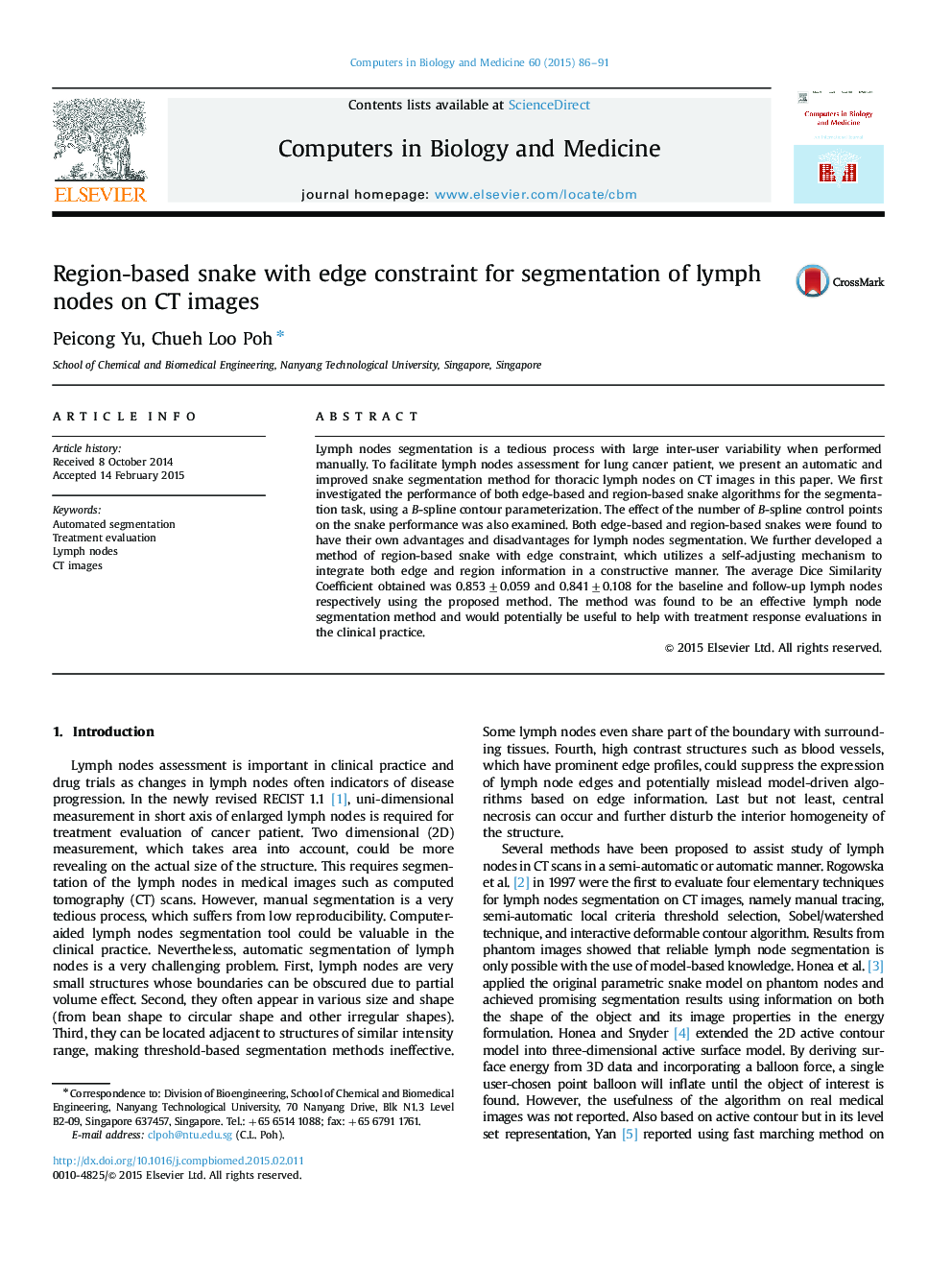| Article ID | Journal | Published Year | Pages | File Type |
|---|---|---|---|---|
| 504929 | Computers in Biology and Medicine | 2015 | 6 Pages |
•Edge- and region-based snakes were complementary for lymph nodes segmentation.•We proposed a segmentation method which integrates both edge and region information.•The method does not suffer from the trade-off between edge and region terms.•This is a clinical application-based implementation of the B-spline snake.•It allows automatic delineation of targeted lymph nodes in CT images.
Lymph nodes segmentation is a tedious process with large inter-user variability when performed manually. To facilitate lymph nodes assessment for lung cancer patient, we present an automatic and improved snake segmentation method for thoracic lymph nodes on CT images in this paper. We first investigated the performance of both edge-based and region-based snake algorithms for the segmentation task, using a B-spline contour parameterization. The effect of the number of B-spline control points on the snake performance was also examined. Both edge-based and region-based snakes were found to have their own advantages and disadvantages for lymph nodes segmentation. We further developed a method of region-based snake with edge constraint, which utilizes a self-adjusting mechanism to integrate both edge and region information in a constructive manner. The average Dice Similarity Coefficient obtained was 0.853±0.059 and 0.841±0.108 for the baseline and follow-up lymph nodes respectively using the proposed method. The method was found to be an effective lymph node segmentation method and would potentially be useful to help with treatment response evaluations in the clinical practice.
